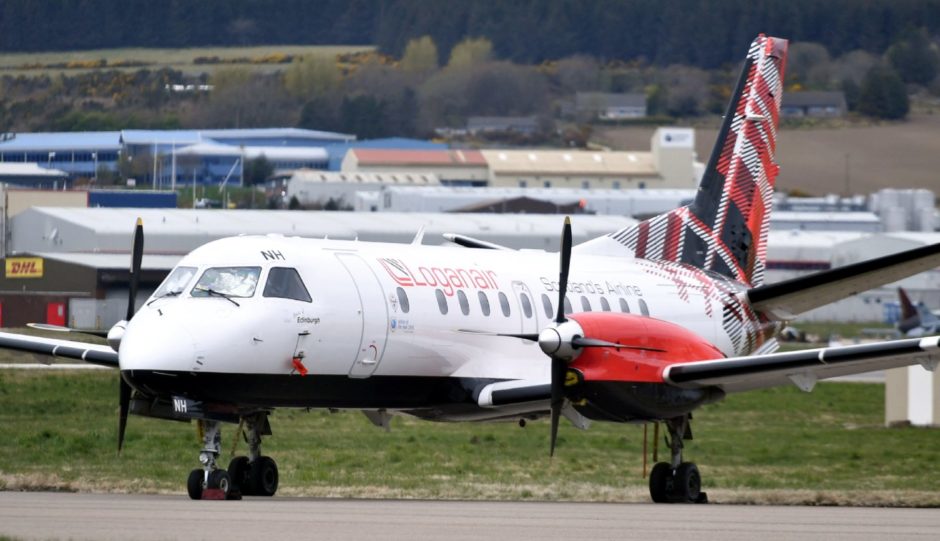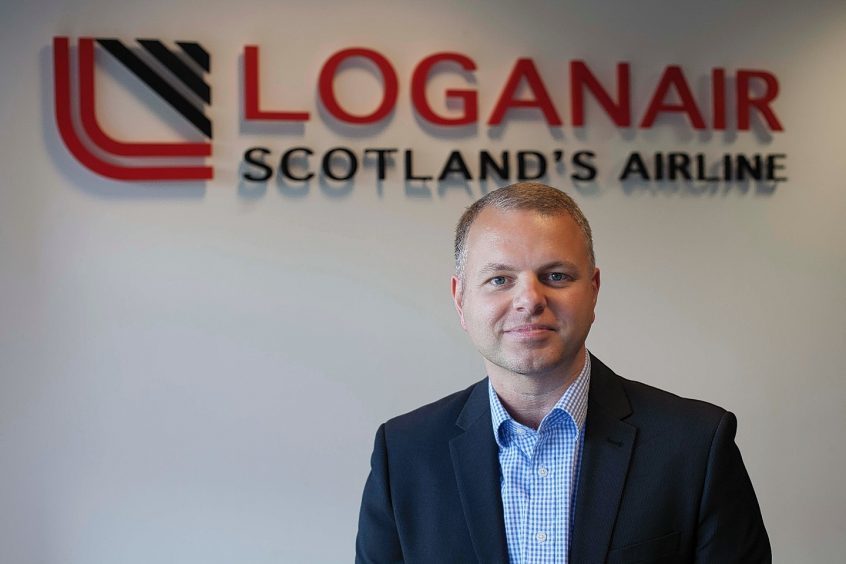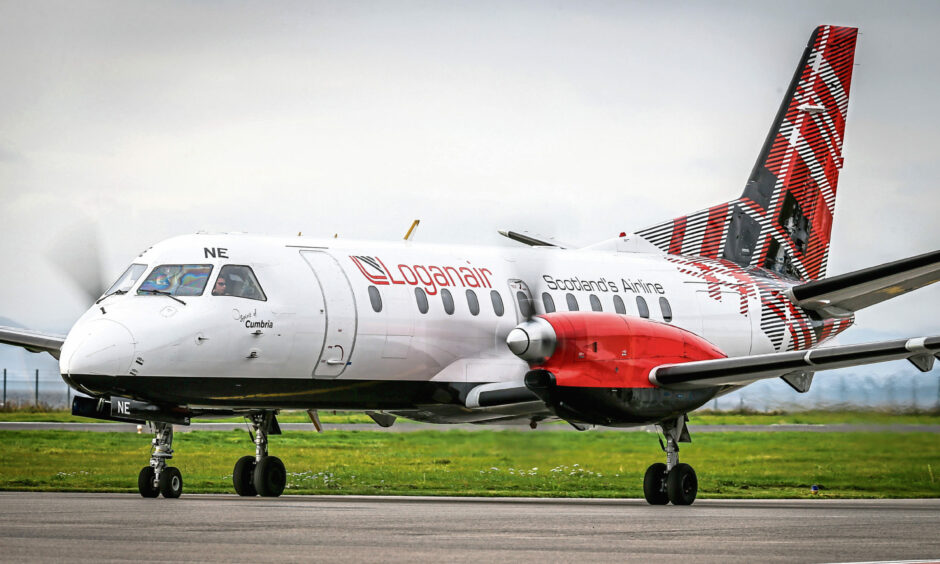Loganair is to phase out its remaining eight Saab 340B aircraft in favour of larger and cleaner ATR turboprops which it will lease in a “multi-million pound” deal.
The Saab 340s have long been a familiar sight hopping between the Highlands and Islands, but will now be part of a £10.7m sale with the eight ATR replacements – a mixture of ATR-42 and 72 variants entering service by next summer.
The new ATR turboprops will bring up to a 27% reduction in carbon emissions per seat versus the Saab 340, supporting the airline’s commitment to reducing emissions and becoming fully carbon neutral by 2040.
Loganair already has 15 ATR turboprops in service, including four of the 72-seat ATR 72-600 passenger aircraft and four ATR 72-500 freighter aircraft which have taken over mail delivery flights to and from the Highlands and Islands in recent months.
The Saab type will leave the airline’s fleet between now and July 2023 through the £10.7m sale agreement and will continue flying with new operators in North America.
Loganair said the completed ATR fleet will have an average age of eight years and bring extra capacity across the network with more passenger seats on each flight, in addition to extra cargo and mail hold space for its charter services.
New ATR aircraft will be able to operate in fog or low cloud
The new ATR aircraft are also equipped to use satellite-based approach systems, enabling operations to continue safely in conditions of reduced visibility such as fog or low cloud – a common issue faced across Highlands and Islands destinations.
The additional eight aircraft will arrive by summer 2023, with Loganair saying it will make them one of the largest operators of ATRs in Europe.
With the first of a series of new agreements already signed, leasing company Abelo joins Nordic Aviation Capital and Falko as providers of aircraft to Loganair.
Training of Loganair pilots, cabin crew and engineers to work on the new aircraft is continuing with the airline’s Glasgow-based engineers the latest to undergo proficiency checks on the ATR aircraft.
This is ahead of their introduction on routes from Glasgow to Islay, Benbecula, Sumburgh, Kirkwall, Derry and Stornoway in the first quarter of 2023.
Loganair chief executive Jonathan Hinkles said: “The Saab 340s have served us and our customers, superbly well over the last two decades but it’s time for us to transition to a new generation of aircraft.
Investment will safeguard connectivity for Highlands and Islands”
Loganair chief executive Jonathan Hinkles
“In selecting our future fleet, it’s important to have an aircraft which builds upon our environmental credentials while withstanding island weather conditions and providing accessibility for all customers in the communities we serve – we’ve found all those characteristics and more in the ATR turboprop.
“Our multi-million-pound investment in ATR aircraft will safeguard connectivity for future generations within the Highlands and Islands air network, on which so many communities depend.
“We serve the vast majority of air routes in the Highlands and Islands on a purely commercial basis, with no direct subsidy – unlike other forms of transport – and are funding the introduction of new aircraft ourselves.”
Loganair is the UK’s largest regional airline, operating 42 aircraft on more than 70 routes throughout the UK, the Isle of Man, Ireland, Norway and Denmark.
The 48-seat ATR-42 has the same crosswind landing capability as the 34-seat Saab 340s they will replace.
The new aircraft also preserve Loganair’s ability to carry domestic pets on its flights and are equipped to use satellite-based approach systems, allowing flights to continue safely in reduced visibility such as fog or low cloud.
Loganair first flew the Saab 340 turboprops in Scotland in 1999 and at its peak, had 17 of the aircraft in its fleet.
Two other recently departed Loganair Saab 340s carried the Olympic Flame when the airline flew it to Orkney, Shetland and the Western Isles on behalf of British Airways as part of its UK-wide tour ahead of the 2012 London Olympics.



